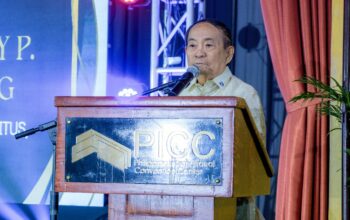By Joann Villanueva
Philippine economic growth is projected to remain robust this year despite the hit from the Omicron variant in January given the strong job creation in December 2021 and the expected rise in infrastructure spending.
According to the February 2022 issue of the Market Call, the monthly joint publication of First Metro Investment Corporation (FMIC) and the University of Asia and the Pacific (UA&P), the higher-than-expected 7.7% gross domestic product (GDP) in the last quarter of 2021 “rekindled optimism that the economy is back on the rapid growth track.”
Citing government data, the report said 797,000 jobs were created last December, bringing the total employment number for the last quarter to 2.7 million, which in turn, boosted economic expansion during the period.
The stronger-than-expected growth in October to December resulted in the full-year print of 5.6 percent, the report said.
A plus for domestic growth was the debt-to-GDP ratio of 60.5% by the end of last year, which was lower than the publication’s projection of 63%.
Another positive factor is the easing of the domestic inflation rate, which decelerated further to 3% last January from the previous month’s 3.2%, it said.
“A surge in Omicron variant cases in January notwithstanding, we think growth will accelerate in 2022 especially considering the huge job gains in Q4 (fourth quarter) 2021. Infrastructure spending should drive H1 (first half) growth since election spending bans exclude major projects,” it added.
With growth expected to remain robust, the report discounts any change in Bangko Sentral ng Pilipinas’ (BSP) policy rates in the first half of this year “as M3 (domestic liquidity) growth has remained fairly tepid and a robust economic recovery well place before the monetary authorities tighten policy despite the expected hikes in the U.S.”
The central bank’s key policy rates have been slashed off a total of 200 basis points in 2020 as part of the BSP’s measures to help buoy the domestic economy from the impact of the pandemic.
To date, the BSP’s overnight reverse repurchase (RRP) rate is at a record-low 2%, the overnight deposit rate at 1.5%, and the overnight lending rate at 2.5%.
Amidst these positive developments, however, the report forecasts the peso to weaken against the US dollar. “With bulging trade deficits hitting record levels and the U.S. dollar remaining strong, the peso shall experience upward pressure,” it added.
To date, the local currency is holding up at 51-level against the US dollar. (PNA)










